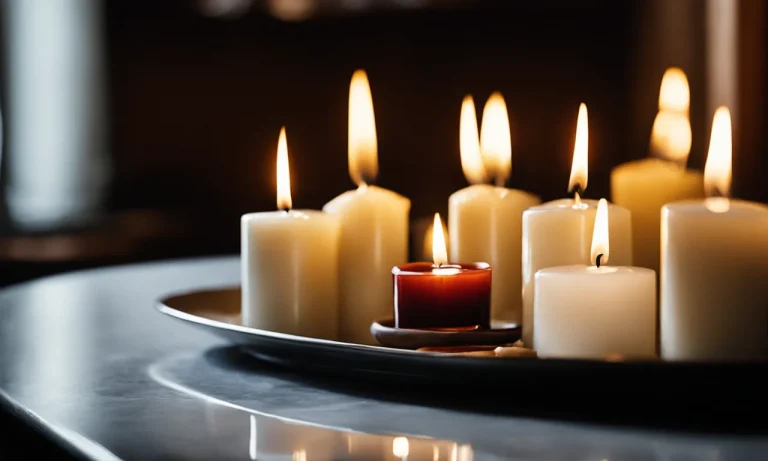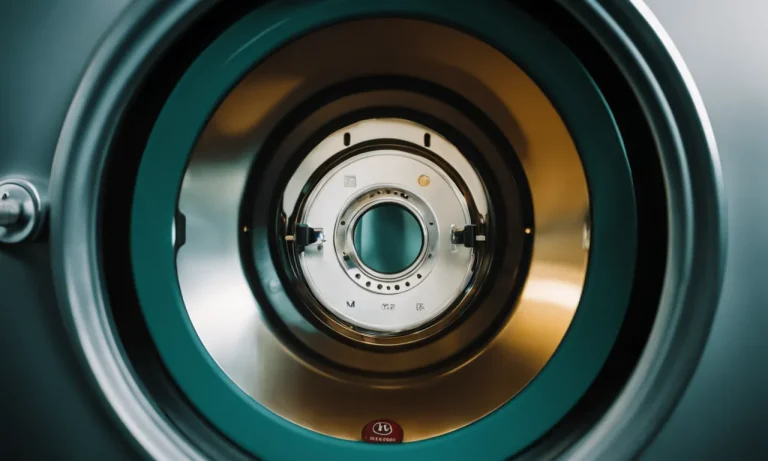Does Gorilla Glue Work On Fabric? A Detailed Look
Gluing fabric can be a tricky endeavor, but Gorilla Glue claims their super-strong adhesive can handle even delicate materials like fabric and paper. If you’re looking to permanently affix fabric or make fabric repairs, you may be wondering – does Gorilla Glue work on fabric?
If you’re short on time, here’s a quick answer to your question: Gorilla Glue does work on fabric, but with some caveats. It forms a rigid, permanent bond that may alter the drape and feel of the fabric.
For best results, use a small amount of Gorilla Glue and let it fully cure before stressing the fabric.
What Kind of Adhesive is Gorilla Glue?
Gorilla Glue is a type of adhesive known as polyurethane glue. It is a versatile and strong adhesive that can bond a wide variety of materials, including fabric. The glue is made up of polyurethane polymers, which when exposed to moisture, activates the adhesive and forms a bond.
It is known for its incredible strength and durability, making it a popular choice for various applications.
Polyurethane glue
Polyurethane glue, such as Gorilla Glue, is a type of adhesive that creates a strong bond by expanding and filling gaps between materials. This feature makes it ideal for use on fabric, as it can penetrate the fibers and create a secure bond.
Unlike other adhesives, polyurethane glue is waterproof, making it suitable for both indoor and outdoor applications.
Advantages over other adhesives
One of the main advantages of using Gorilla Glue on fabric is its strength. It provides a strong bond that can withstand tension and pulling forces, making it suitable for repairing torn fabrics or attaching patches.
Additionally, Gorilla Glue is flexible when dry, allowing the fabric to move without compromising the bond.
Gorilla Glue also offers excellent resistance to heat and cold, making it suitable for use in extreme temperature conditions. This feature is particularly useful when working with fabrics that will be exposed to varying weather conditions or when creating outdoor fabric projects.
Furthermore, Gorilla Glue dries clear, ensuring that the bond does not affect the appearance of the fabric. This is especially important when working with delicate or patterned fabrics where a visible adhesive could detract from the overall aesthetic.
Disadvantages and limitations
While Gorilla Glue is a versatile adhesive, it does have some limitations. One of the main disadvantages is that it expands as it cures, which can lead to excess glue seeping out from the bonded area. It is important to use Gorilla Glue sparingly and wipe away any excess before it dries.
Another limitation is that Gorilla Glue requires moisture to activate the adhesive. This means that it may not be suitable for all types of fabric, particularly those that are water-sensitive or cannot be exposed to moisture.
It is essential to follow the manufacturer’s instructions and test the glue on a small, inconspicuous area of the fabric before applying it to the entire project.
Lastly, Gorilla Glue has a long curing time, typically taking 24 hours or more to fully set. This may not be ideal for projects that require immediate use or handling. Patience is key when using Gorilla Glue on fabric, allowing it ample time to cure and create a strong bond.
Using Gorilla Glue on Different Fabrics
Gorilla Glue is a popular adhesive known for its strength and versatility. While it is primarily used for bonding various materials such as wood, metal, and ceramics, many people wonder if it can be used on fabrics as well.
In this section, we will explore the effectiveness of using Gorilla Glue on different types of fabrics.
Natural fibers like cotton and linen
Gorilla Glue can be used on natural fibers like cotton and linen, but it is important to exercise caution. The glue is known for its strong bond, so applying too much of it can result in stiffness or discoloration of the fabric.
It is recommended to use a small amount of glue and ensure that it is evenly distributed across the area to be bonded. Additionally, it is advisable to test the glue on a small, inconspicuous area of the fabric before proceeding with the actual application.
Synthetic fibers like polyester and nylon
Gorilla Glue can also be used on synthetic fibers such as polyester and nylon. These materials are known for their durability and resistance to chemicals, which makes them suitable for adhesive applications.
When using Gorilla Glue on synthetic fabrics, it is important to follow the same guidelines as with natural fibers. Applying a small amount of glue and testing it on a small area beforehand will help ensure that the fabric remains intact.
Leather, suede, vinyl
When it comes to bonding leather, suede, or vinyl, Gorilla Glue can be a reliable option. These materials are commonly used in upholstery, footwear, and accessories, and Gorilla Glue can provide a strong and long-lasting bond.
However, it is crucial to use the glue sparingly, as excessive application can damage the appearance and texture of these fabrics. It is recommended to apply a thin layer of glue and use clamps or pressure to hold the materials together while the glue dries.
Tips for best results
Here are some tips to ensure the best results when using Gorilla Glue on fabrics:
- Read the instructions on the Gorilla Glue packaging and follow them carefully.
- Test the glue on a small, inconspicuous area of the fabric before proceeding with the actual application.
- Use the glue sparingly to avoid stiffness, discoloration, or damage to the fabric.
- Apply pressure or use clamps to hold the materials together while the glue dries for a strong bond.
- If in doubt, seek professional advice or consult a fabric expert.
Remember, while Gorilla Glue can be effective on various fabrics, it is always recommended to exercise caution and test it on a small area first. This will help ensure that the glue does not cause any unwanted damage to your fabric.
Applying Gorilla Glue to Fabric
Prepare the fabric
Before applying Gorilla Glue to fabric, it’s important to properly prepare the surface. Start by cleaning the fabric to remove any dirt, dust, or oils that could prevent the glue from adhering effectively.
You can use a mild detergent and water to gently clean the fabric, or follow the manufacturer’s instructions for fabric care. Once the fabric is clean and dry, you can proceed with the gluing process.
Apply glue sparingly
When using Gorilla Glue on fabric, it’s crucial to apply the glue sparingly. Gorilla Glue is a powerful adhesive that expands as it dries, so using too much can result in excess glue seeping out and creating a mess.
Apply a thin, even layer of glue to one side of the fabric, focusing on the areas that need to be bonded. Be careful not to apply the glue too close to the edges, as it may spread when compressed.
Let it cure fully
After applying the Gorilla Glue to the fabric, it’s essential to let it cure fully before handling or using the fabric. The curing time can vary depending on the type of Gorilla Glue used, so it’s best to refer to the product’s instructions for specific guidance.
Generally, it takes around 24 hours for the glue to reach its maximum strength. During this time, avoid applying any stress or pressure to the glued area.
Avoid stressing the bond
To ensure a strong and long-lasting bond, it’s important to avoid stressing the glued area. This means avoiding activities that could strain or pull on the fabric, such as stretching, tugging, or washing the fabric vigorously.
While Gorilla Glue is known for its strength, excessive stress can weaken the bond over time. If possible, hand-washing or spot-cleaning the fabric is recommended to minimize any potential damage to the glue bond.
Remember, Gorilla Glue is primarily designed for use on rigid surfaces, and while it can work on fabric, it may not be the ideal adhesive choice for all fabric projects. It’s always a good idea to test the glue on a small, inconspicuous area of the fabric before applying it to a larger, more visible section.
This will help ensure compatibility and avoid any unwanted damage to the fabric.
For more information and advice on using Gorilla Glue on fabric, you can visit the official Gorilla Glue website at www.gorillatough.com.
Gorilla Glue Alternatives for Fabrics
While Gorilla Glue is a popular adhesive for a variety of projects, it may not always be the best choice for fabrics. Thankfully, there are several alternatives available that are specifically designed for use on fabric materials.
These alternatives offer a more flexible and durable bond, ensuring that your fabric projects stand the test of time.
Fabric glue
Fabric glue is specifically formulated to bond fabric materials together. It provides a strong and flexible hold, making it ideal for repairing or creating fabric-based items. Fabric glue is easy to use, as it typically comes in a bottle with a precision applicator tip.
Simply apply the glue to the fabric and press the pieces together firmly. Fabric glue is also machine washable, making it a great choice for clothing repairs.
Liquid stitch
Liquid stitch is another popular alternative to Gorilla Glue for fabrics. It is a fabric adhesive that creates a permanent bond between fabric pieces. Liquid stitch is particularly useful for hemming, as it allows you to create a clean and seamless finish.
It is also machine washable, providing added convenience for fabric projects that require frequent laundering.
Hot glue
Hot glue is a versatile adhesive that can be used on a wide range of materials, including fabric. While it may not be as flexible as fabric glue or liquid stitch, hot glue can still be an effective option for certain fabric projects.
It is important to note that hot glue should be used sparingly on fabric to avoid creating a stiff and rigid texture. Additionally, hot glue is not machine washable, so it may not be suitable for fabric items that require frequent cleaning.
Stitch witchery
Stitch witchery is a unique alternative to traditional adhesives for fabric. It is a fusible bonding web that is activated by heat. Stitch witchery allows you to create strong and seamless bonds between fabric pieces without the need for sewing.
Simply place the bonding web between the fabric layers, apply heat with an iron, and press the pieces together. Stitch witchery is machine washable and provides a lasting hold, making it a popular choice for fabric repairs and alterations.
It’s important to note that the best adhesive for fabric will depend on the specific project and materials you are working with. It’s always a good idea to test a small, inconspicuous area before applying any adhesive to ensure compatibility with your fabric.
Additionally, be sure to follow the manufacturer’s instructions for proper application and drying times.
If you’re looking for more information on fabric adhesives and their applications, websites like fabric.com and tillyandthebuttons.com offer a wealth of resources and product recommendations.
When to Use Gorilla Glue on Fabrics
Gorilla Glue is a versatile adhesive that is known for its strength and durability. While it is commonly used for bonding different materials together, including wood, metal, and plastic, many people wonder if it can be used on fabrics as well.
The good news is that Gorilla Glue can indeed be used on certain types of fabrics, depending on the specific application. Here are a few situations where Gorilla Glue can be a great choice for fabric repairs and projects:
Permanent repairs
Gorilla Glue is excellent for making permanent repairs on fabrics. Whether you have a ripped seam, a torn piece of fabric, or a loose button, Gorilla Glue can provide a strong and long-lasting bond. It works well on a variety of fabrics, including cotton, denim, polyester, and even leather.
However, it’s important to note that Gorilla Glue can expand as it dries, so it’s best to use it sparingly and apply pressure to ensure a secure bond. Additionally, it’s always a good idea to test a small, inconspicuous area of the fabric before applying Gorilla Glue to ensure that it doesn’t cause any discoloration or damage.
Crafts and home decor
Gorilla Glue is a popular choice for crafts and home decor projects involving fabrics. Whether you’re creating a fabric wall art, a decorative pillow, or a fabric-covered photo frame, Gorilla Glue can help you achieve a professional and secure result.
Its strong bond ensures that your creations will withstand the test of time. Just be sure to follow the instructions carefully and allow the glue to dry completely before handling or displaying your finished project.
Outdoor gear and equipment
If you have outdoor gear or equipment made of fabric that needs repair, Gorilla Glue can be a reliable solution. From torn camping tents and backpacks to damaged fishing waders and gardening gloves, Gorilla Glue can help you fix these items and get them back in working order.
Its waterproof and weather-resistant properties make it ideal for outdoor applications, ensuring that your repairs will hold up even in harsh conditions.
Situations to avoid
While Gorilla Glue can be a great option for certain fabric applications, there are some situations where you should avoid using it. For example, delicate fabrics like silk or lace may not react well to the strong adhesive properties of Gorilla Glue and could end up being damaged.
Additionally, fabrics that require frequent washing or dry cleaning may not be suitable for Gorilla Glue, as it may not hold up well under these conditions. In such cases, it’s best to consult a professional or look for fabric-specific adhesives that are designed to work with these types of materials.
Conclusion
While Gorilla Glue isn’t ideal for every fabric application, it can form very strong, permanent bonds with cloth and other flexible materials. With some care taken to use minimal amounts and let it fully cure, Gorilla Glue can be used to mend ripped seams, adhere fabric layers, and attach decorative trims or patches.
Just keep in mind that it creates a rigid bond that may inhibit drape and movement. Test on small hidden areas first. For temporary or delicate repairs, a fabric glue or stitching may be a better choice.







